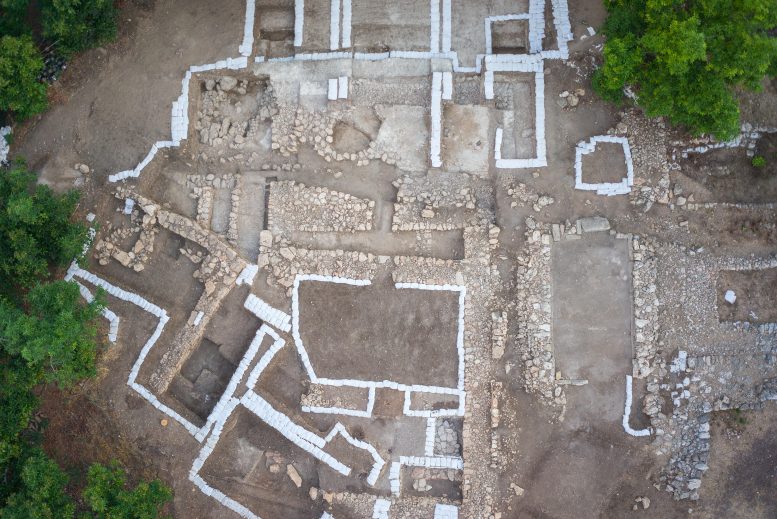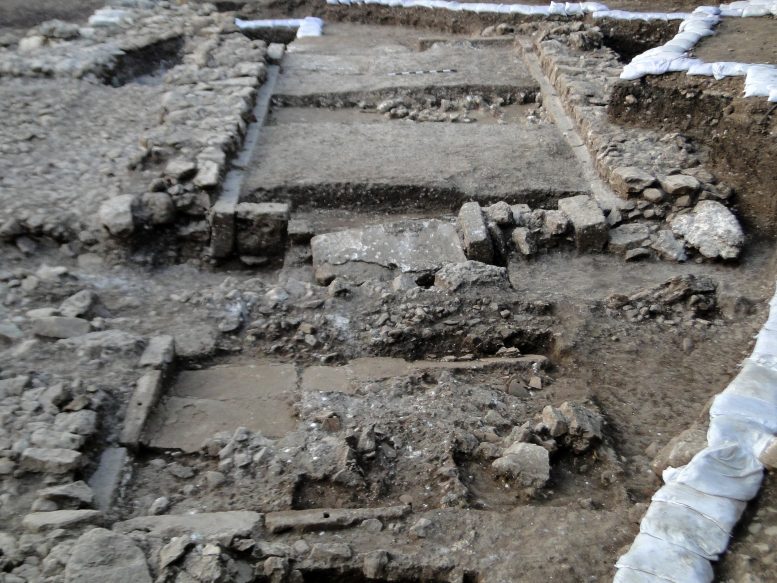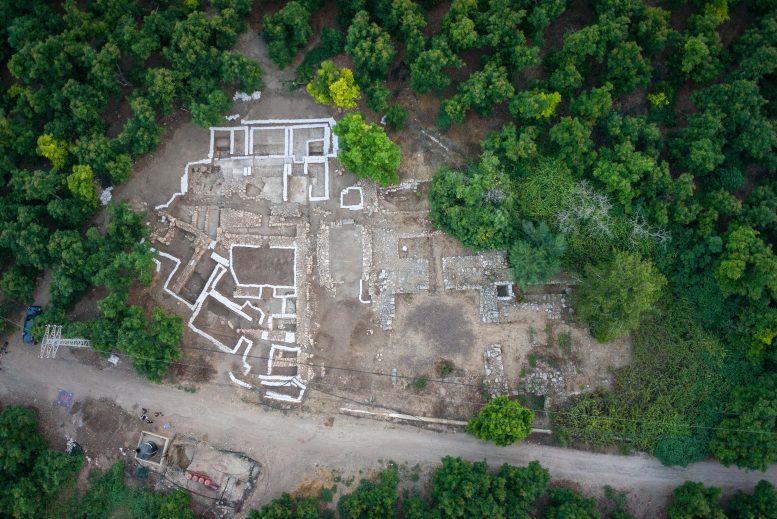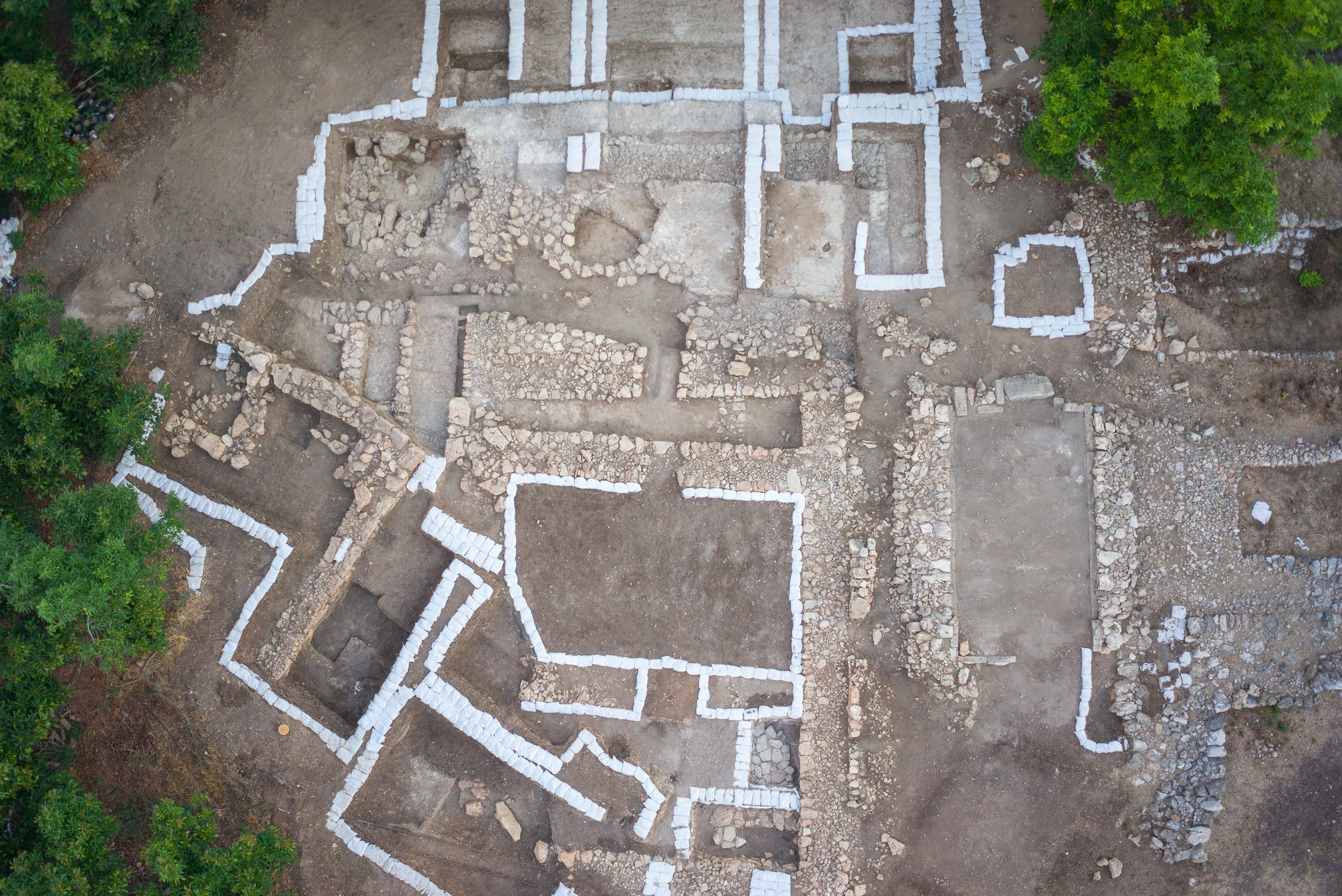Aerial view of the Southern Storage Complex (SSC), Northern Storage Complex (NSC; blue dashed box), and the moat (red dashed lines). Photo credit: Eric Cline / GW
Thriving Canaanite palace that was suddenly abandoned 3,700 years ago; New evidence suggests an earthquake as the likely culprit.
A team of Israeli and American researchers, funded by grants from the National Geographic Society and the Israel Science Foundation, has found new evidence that an earthquake some 3,700 years ago may have caused the destruction and abandonment of a thriving Canaanite palace complex.
The group made the discovery on the 75-acre site of Tel Kabri in Israel, which is home to the ruins of a Canaanite palace and a city built between 1900 and 1900 BC. Were dated. The excavations were on the land of Kibbutz Kabri in western Galilee and the region is jointly run by Assaf Yasur-Landau, professor of Mediterranean archeology at the University of Haifa, and Eric Cline, professor of classics and anthropology at George Washington University.

Above the north complex and the wine cellar with moat in 2019. Photo credit: GW
“For several years we wondered what caused the sudden destruction and abandonment of the palace and the place after centuries of prosperous occupation,” said Yasur-Landau. “A few years ago we began digging a moat that runs through part of the palace, but initial indications suggested it was modern and may have been excavated in the last few decades or a century or two at most. But then, in 2019, we opened a new area and found that the trench was at least 30 meters long, with an entire section of a wall that had fallen into it in ancient times, and other walls and floors that tipped on its side . ”
According to Michael Lazar, the study’s lead author, past earthquakes can be extremely difficult to spot on archaeological records, especially in places where there isn’t a lot of stone masonry and where degradable building materials like sun-dried mud bricks and lichen and stave have been made used instead. In Tel Kabri, however, the team found stone foundations for the lower part of the walls as well as adobe structures above.

Orthostat building facing south and moat in 2011. Photo credit: GW
“Our studies show the importance of combining macro and micro archaeological methods to identify ancient earthquakes,” he said. “We also had to evaluate alternative scenarios, including climate, environmental and economic collapse and warfare, before we were confident of proposing a seismic event scenario.”
Researchers were able to see areas where the plastered floors appeared warped, the walls tilted or shifted, and adobe bricks had fallen from the walls and ceilings into the rooms, in some cases quickly burying dozens of large jars.
“It really looks like the earth just opened up and everything on both sides fell in,” said Cline. “It is unlikely that the destruction was caused by violent human activity, as there are no visible signs of fire, no weapons such as arrows to indicate battle, or unburied bodies related to the fight. We were also able to see some unexpected things in other rooms of the palace, including in and around the wine cellar we excavated a few years ago. ”

Above the excavation area after the 2019 season. Photo credit: GW
In 2013, during an expedition, also supported by a grant from the National Geographic Society, the team discovered 40 jars in a single storage room in the palace. An analysis of organic residues carried out on the glasses showed that they contained wine; It was then described as the oldest and largest wine cellar discovered in the Middle East to date. Since then, the team has found four other such storage rooms and at least 70 other jars, all of which were buried in the building’s collapse.
“The soil deposits imply a rapid collapse rather than a slow accumulation of mined adobe bricks on standing walls or ceilings of an abandoned structure,” said Ruth Shahack-Gross, professor of geoarchaeology at the University of Haifa and co-author of the study. “The rapid collapse and burial coupled with Tel Kabri’s geological location increases the possibility that one or more earthquakes could have destroyed the walls and roof of the palace without setting it on fire.”
Researchers are confident that their methodological approach can be applied to other archaeological sites, where it can be used to test or amplify cases of possible earthquake damage and destruction.
Roey Nickelsberg, a PhD student at the University of Haifa, also contributed to the research and graduation.
The results were recently published in the journal PLUS ONE. The National Geographic Society, Israel Science Foundation, GW, the University of Haifa, and private donations funded the research.
Reference: “Earthquake damage as a catalyst for the abandonment of a settlement from the Middle Bronze Age: Tel Kabri, Israel” by Michael Lazar, Eric H. Cline, Roey Nickelsberg, Ruth Shahack-Gross and Assaf Yasur-Landau, September 11, 2020, PLUS ONE.
DOI: 10.1371 / journal.pone.0239079



